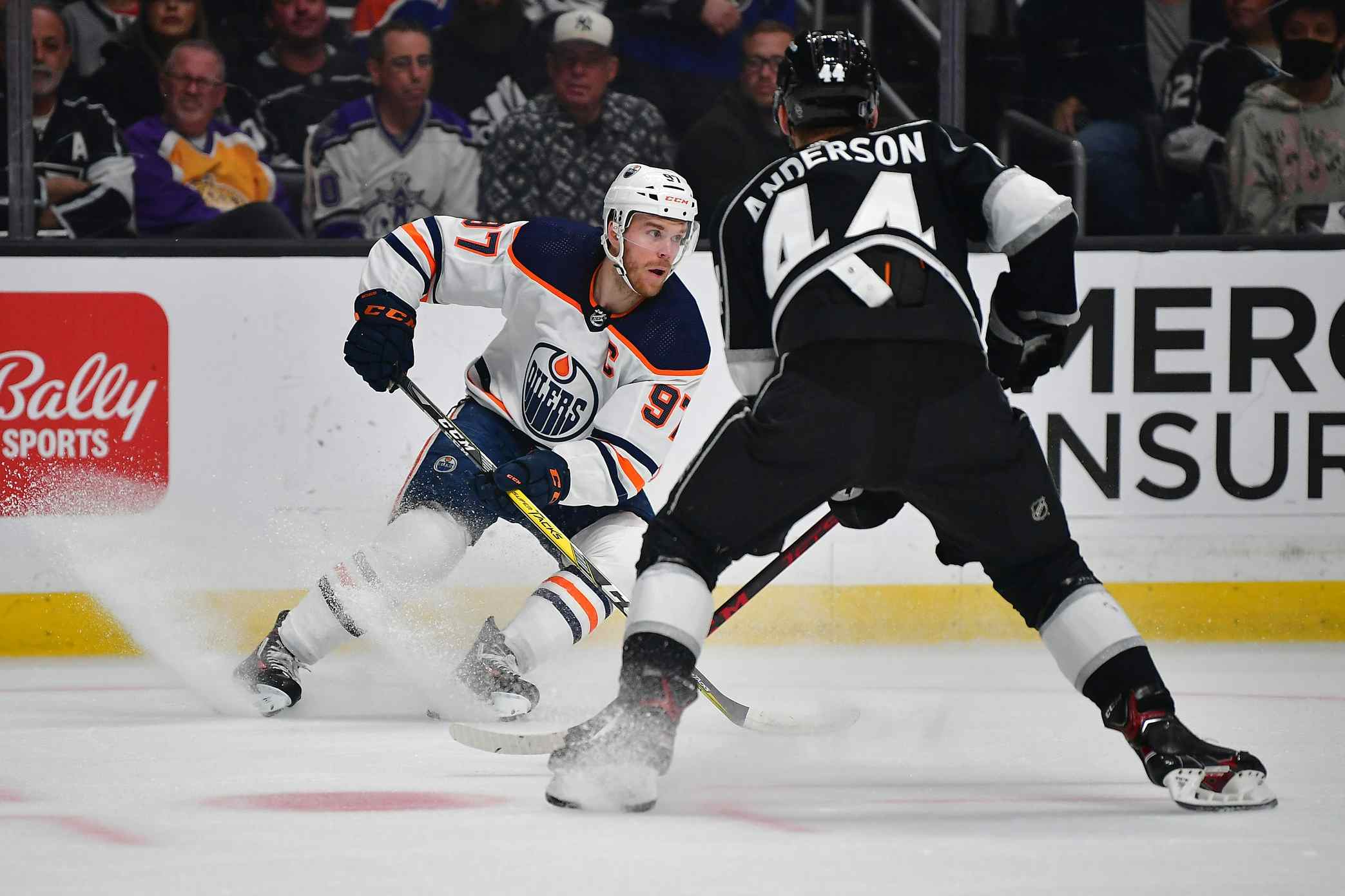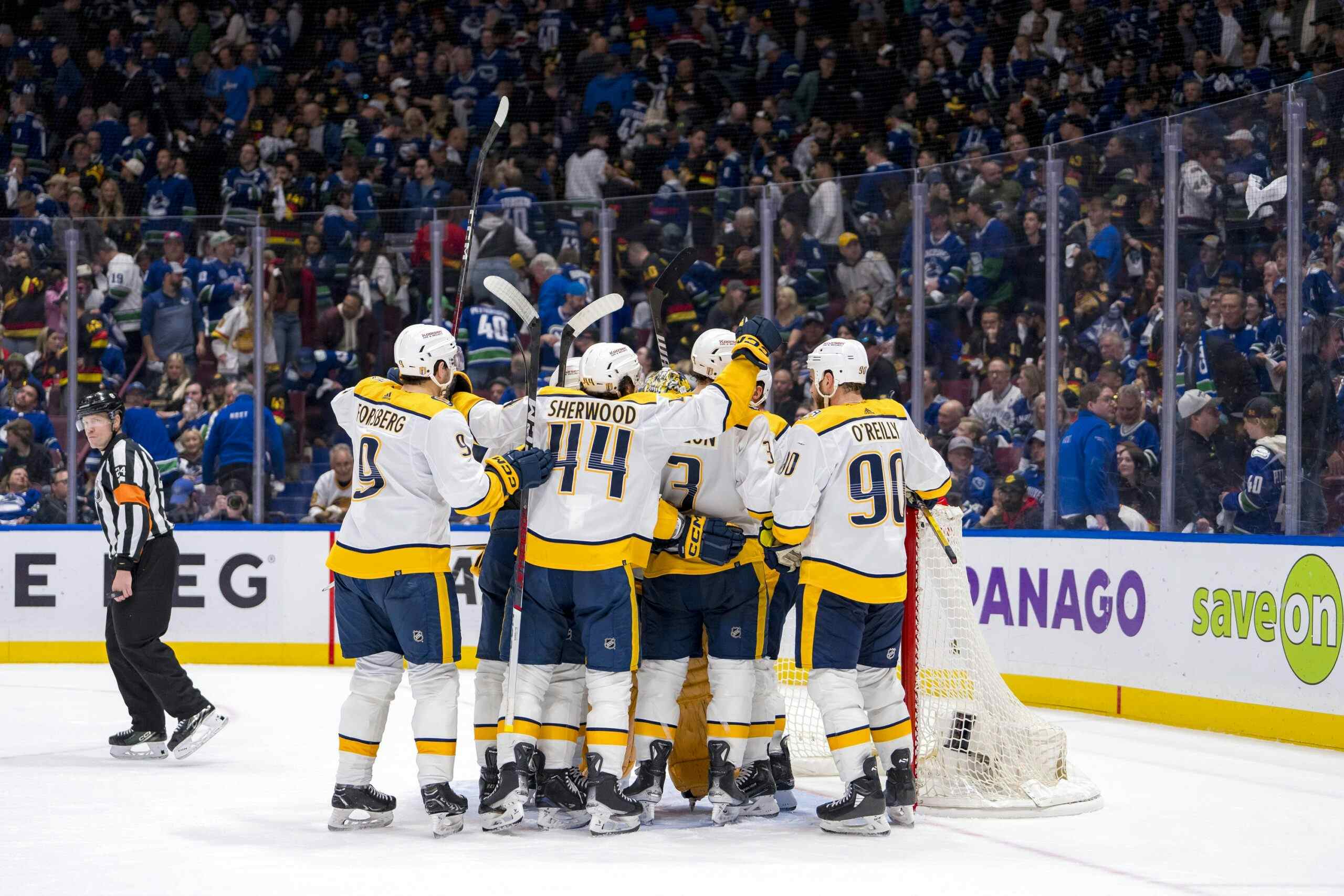Jordan Eberle: Comparables

Marian Hossa (kaatiya/Flickr under CC BY 2.0)
For all the debate about Jordan Eberle’s ability to replicate this season’s performance, there is no question that his 76 points in 78 games at the age of 21 was a remarkable achievement. That point is driven home when one looks at the list of players who have managed to score at a similar pace sometime between the age of 20 and 22 – the list is up after the jump, and it’s beautiful.
The following group of players appeared in at least 50 games and scored between 0.90 points/game and 1.05 points/game between their age 20 and 22 seasons (Eberle falls neatly into the middle of both numbers, scoring at 0.97 points per game at the age of 21). I’ve restricted myself to the post-1997-98 time period because that keeps us from having to adjust for era effects and it also is the earliest we have data like time on ice for specific players. Here’s the list, generated with assistance from hockey-reference.com:

Some notes on the chart – some players met the criteria more than once; a yellow box indicates a second season between the ages of 20 and 22 where they hit the mark. A red box on the other hand indicates a year with 40 games or less played – i.e. years with serious injury. Also worth noting: all point totals are projected over 82 games so as to a) compare players fairly without penalizing a guy who played 70 games and b) keep the chart readable – points/82 has always been easier for me to track than points/game.
The latter point is a big one and helps give players some credit who otherwise would not have received it. Alex Semin scored 79 points despite missing 20 games in 2008-09 – that was a better than 100-point pace over a full season. Players like him, Tanguay, Sykora and even Hemsky are often underrated as offensive threats because their best scoring seasons also featured time lost to injury.
Anyway, looking at the names on that list it’s clear that Eberle is in some high-end company. As far as scoring rates go, those players averaged 79 points/82 in the season’s in question (just a whisker under Eberle’s 80-point full-season pace) and scored at a 74 points/82 pace the next year – a slight drop, which is probably unexpected by most given the age of the players involved (all young).
What’s interesting is how big that drop was when injuries are taken into account. Including the two cases of serious injury (Martin Havlat and Patrice Bergeron) this group of high-end players averaged 62 total points following their big year. Even removing the two cases of especially serious injury, the group as a whole only averaged 67 points the year after.
Also of note is the fact that many of the players who dipped ended up being high-end guys over the course of their careers – Rick Nash, Anze Kopitar, Vincent Lecavalier and Marian Hossa were among the players who saw their offensive output decline by 10% or more following a breakthrough season. All, of course, rebounded in the long-term. Some of the players who managed to hang on to their offense went the opposite direction – guys like Petr Sykora, Sergei Samsonov, Patrice Bergeron and Paul Stastny represent the lower-end offensively in this group; all four gained offense immediately after their big year but dipped over time.
I’m going to do more with this group of players in the coming days, digging into TOI and where possible advanced statistics to see which guys have the most in common with Eberle at the same age, but for now I think it’s enough to make two key points from this group of players worth noting: first, that a mild decline in total offense was a common occurrence, and second that it didn’t really matter in the long-term because these players all turned out well anyway – when Sergei Samsonov is the worst player in a given group, that’s a good-looking set of comparables.
In other words: don’t moan because the stats guys (gosh, my prediction of 62 points hits the group average exactly) and even the not-really-stats guys (note how Robin Brownlee’s prediction exactly reflects the average total for this group once serious injuries are taken out of the mix) are predicting a small dip in Jordan Eberle’s offense. It happens. It happened to Nash, to Kopitar, to Lecavalier and to Hossa. It happens more often than the reverse (a big increase in points) occurs. It doesn’t mean Eberle is not an excellent player, or that he won’t end up having a superb career. All it means is that we’re expecting a small step backwards in total production next year.
Related at OilersNation
- How many goals will Jordan Eberle score next season?
- On the possibility of trading Hall, Eberle or Yakupov
- Can the Oilers keep their young core together?
- Extend the kids? Maybe later
- The Jordan Eberle selection
- Forward scoring at home and on the road
- Ten points: Oilers on the upswing
- The Oilers’ nasty little penalty habit
- Follow Jonathan Willis on Twitter
Recent articles from Jonathan Willis





